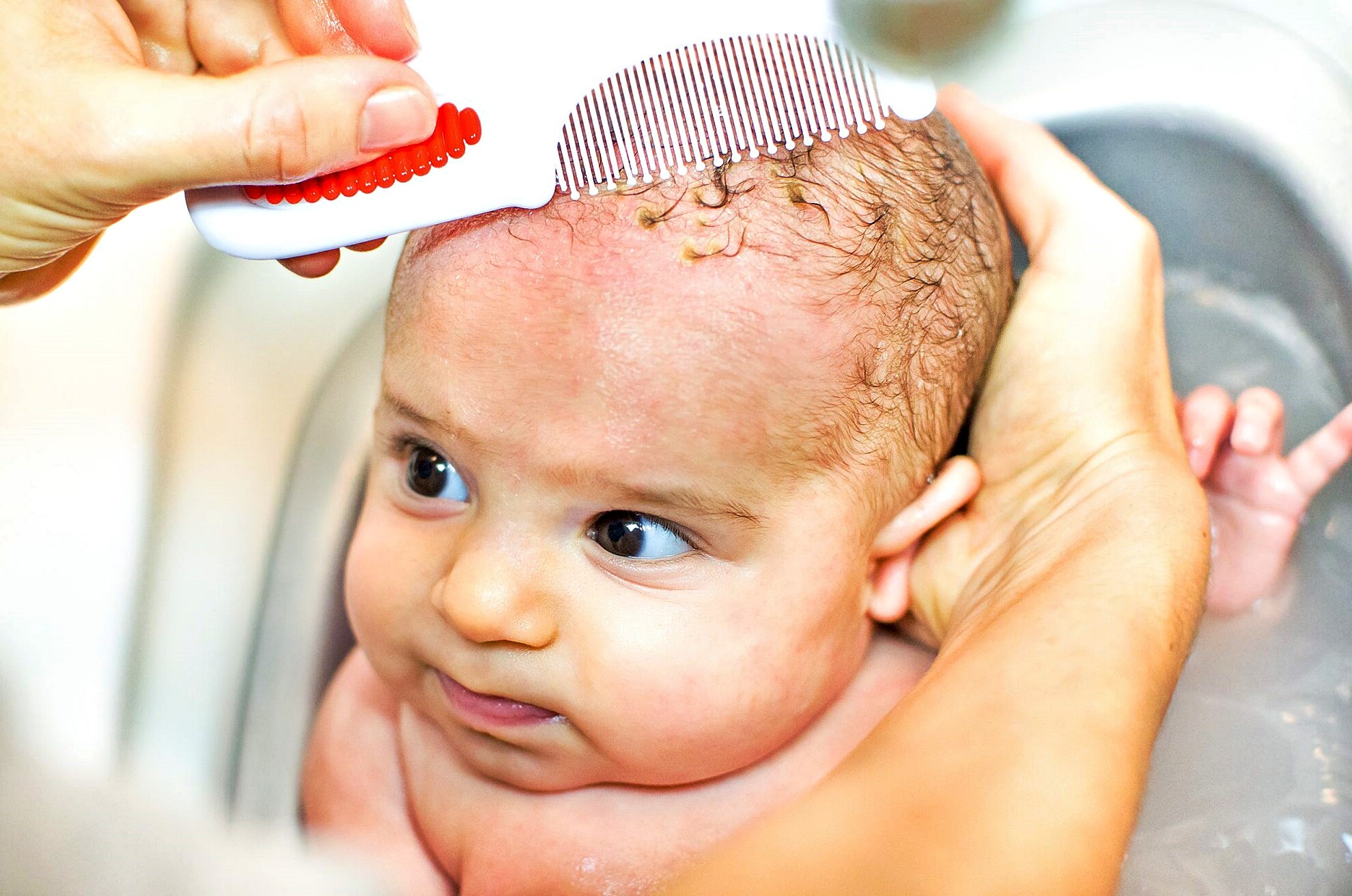Cradle cap in babies occurs quite frequently. Here you will learn how to recognize cradle cap correctly and what treatment can help.
What is cradle cap?
Cradle cap is an early form of neurodermatitis (atopic eczema) and thus an inflammation-related skin disease that affects babies from the age of three months. It causes scaly yellowish-brownish caps on the scalp, which cause itching. Visually, these look like burnt cap – hence the name. As the disease progresses, the cradle cap can also spread to the baby’s forehead, cheeks and other parts of the body, for example to the arms and legs. Cradle cap should not be removed – instead, gentle ointments and creams help to relieve the itching.
From cradle cap to neurodermatitis?
Studies show that more than half of all children who later develop neurodermatitis already suffered from cradle cap when babies were born. But sometimes the first symptoms do not appear until pre-school age. And it is not always only children who are affected: In some cases the symptoms do not recede but persist into adulthood. Around 1.5 to five percent of all adults in Germany therefore suffer from cradle cap. And: in general, the number of cases of neurodermatitis and cradle cap has increased significantly in recent decades.
Causes of cradle cap
It has not yet been fully clarified what causes cradle cap. However, experts suspect an interaction of several factors:
- Hereditary predisposition: This factor is undisputed. If both parents suffer from neurodermatitis, the child will also suffer from it with a probability of 60 to 80 percent.
- Disturbed skin barrier: Babies with cradle cap suffer more frequently from dry skin, which on the one hand tends to cause itching and on the other hand increases the risk of allergies.
- Disturbed immune system: Affected children often have elevated levels of the antibodies immunoglobulin E, which play a major role in the development of allergies.
- Susceptible nervous system: External stimuli such as dry or cold temperatures easily disturb the nervous system.
- Psychological factors: Neurodermatitis often worsens under stress or during periods of grief.
These symptoms occur
The following symptoms occur with cradle cap:
- Reddish skin rash on the head (possibly with nodules or blisters)
- Dry sheds
- Yellow to brown crusts on the rash (this is the actual cradle cap)
- Itching
Parents will notice that the infant is very restless and cries a lot. In addition, he will try to scratch himself – which can increase the cradle cap. In addition, the baby may injure his skin even more, which increases the risk of further infections.
Treatment: What to do against cradle cap?
Cradle cap should not be removed: The scalp is inflamed and itchy from the disease. Removing cradle cap would be very painful for the child and also only causes new injuries through which bacteria can penetrate the skin. The doctor can prescribe special creams and ointments to relieve the itching. To prevent the baby from scratching itself, the fingernails should be cut weekly and the hands should be put into small mittens.
Cradle cap or head gneiss?
The terms cradle cap and head gneiss (seborrhoeic eczema) are often used synonymously – but these are two different phenomena. And in contrast to cradle cap, head gneiss is completely harmless. It provides soft, greasy scales, which cause yellow to yellow-brown skin adhesions and thus crusts. Head gneiss can appear as early as one week after birth and, unlike cradle cap, does not usually cause itching or other complaints, although it can smell a little unpleasant.
It is not entirely certain how the phenomenon develops – but experts suspect that the sebaceous glands on the baby’s head are overactive. The dandruff can be gently removed with mild baby shampoo. In most cases, head gneiss heals on its own after a few months.

